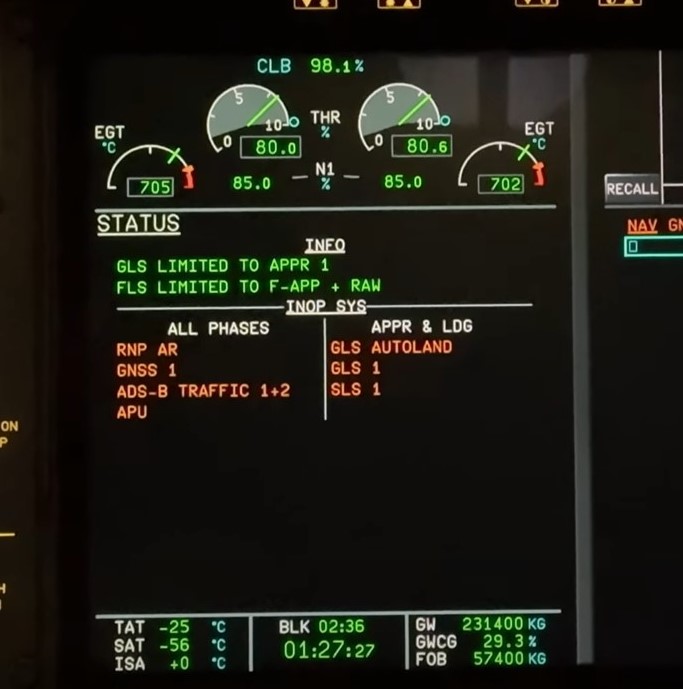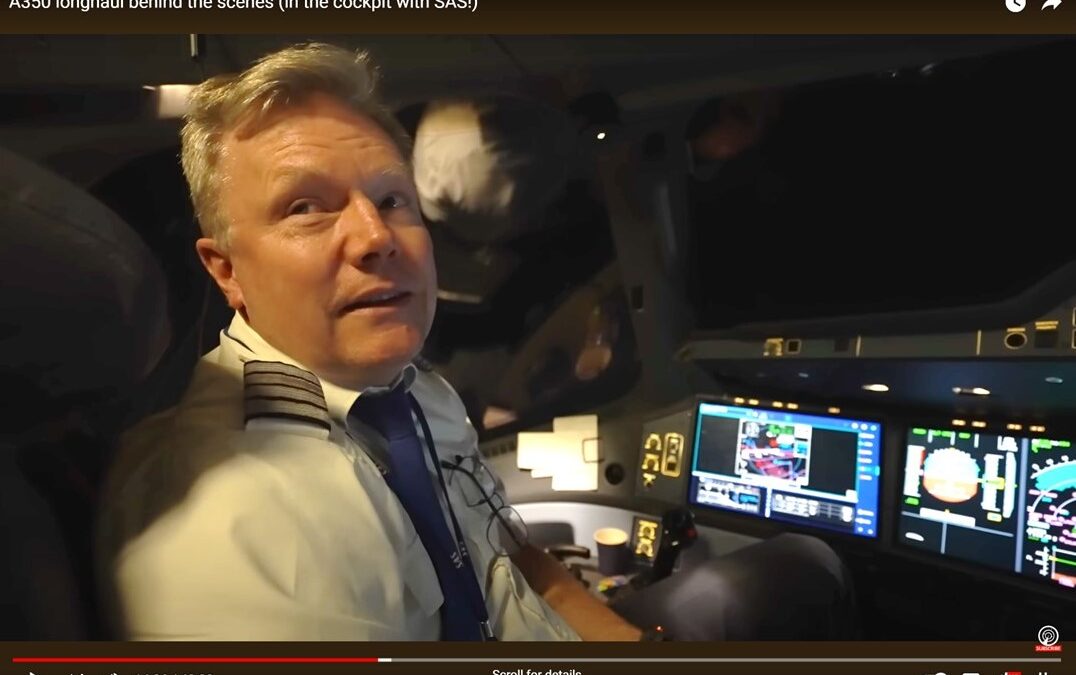Image: FlightRadar24/YouTube
What’s New: Cockpit video of a flight from Copenhagen to Bangkok. Lots of GPS disruption, pilots describing systems that don’t work and the things they do to compensate.
Why It’s Important: Lots of safety systems are disabled and pilot (and air traffic controller) workload is higher. So more opportunities for mistakes and mishaps.
What Else to Know:
- Thanks to John Wiseman at GPSJam.org for highlighting this video in his X posts.
- From video:
- ‘No GPS from Poland to the Persian Gulf’
- ‘Turning off the terrain warning system just because now we get so many of these jamming problems that we want to make sure we don’t get these terrain warning on the screen in the middle of the night.’
- ‘This also happens in Northern Norway…’

- Systems inoperative in the video:
- RNP AR (assists with approach to airport and landing)
- GNSS 1 (Global Navigation Satellite System #1)
- ADS-B (an anti-collision and air traffic management system)
- TRAFFIC 1 + 2 (traffic warnings/ anti-collision)
- APU (Auxiliary Power Unit – basically a small engine that can power electrical and hydraulic systems when the engines are not running. Not sure why or how this is impacted by jamming)
- GLS AUTOLAND, GLS 1 (Satellite-base landing system)
- SLS 1 (Also a satellite-based landing system)
- Terrain Warning
- Passenger internet connections (oh my!)
- Nothing really bad seems to have happened in commercial aviation because of all this interference… so far. Pilots are able to compensate for the loss of GPS in most instances. If there were other problems in the aircraft, though, like an engine failure, the lack of GPS and associated safety systems could contribute to a tragedy.

A350 longhaul behind the scenes (in the cockpit with SAS!)


